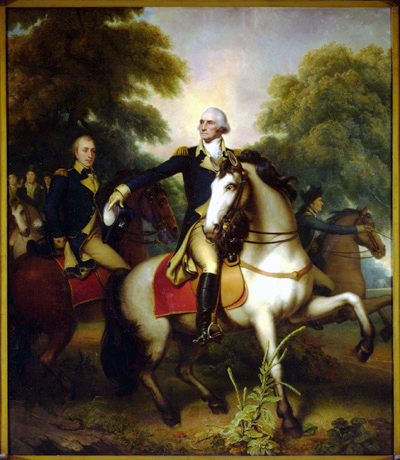The Battle of the Clouds: — Part 1 of 5
The March to the Battle

Washington Before Yorktown
Rembrandt Peale, 1823
There was no rest for the weary.
George Washington's troops had spent the prior day battling the British at Brandywine for nearly a dozen hours — much of the fighting transpiring in oppressive 90-degree heat. Many of the Americans had been up well before dawn on the morning of the battle, had spent the day on the battlefield in intense fighting, and, as night fell, marched miles in dark retreat to the Continental camp at Chester.
Now, in the chill 4 A.M. dawn of the 12th, the Americans were on the march again.
Washington did not want to take the chance that General Howe and the British would try to follow up their incomplete victory and finish off the Americans in the morning. So, the American general roused his exhausted men, and marched them from Chester northeast in the direction of Philadelphia.
Howe allowed his men a day of rest and burying the dead. (On the 13th he sent Cornwallis to Chester to find Washington.)
By midday the Americans reached the Schuylkill River and crossed the bridge over the Middle Ferry. This left them on the east side of the river, a couple of miles from Philadelphia. And though the steeple of Christ Church and other familiar landmarks could be seen, the comforts and pleasures of the city would have to wait; the army turned away from the Philadelphia, and marched along the east bank of the river, arriving at the Falls of Schuylkill around nine that night.
They had to be drop-dead exhausted. Not only had the Americans just participated in one of the bloodiest battles of the entire Revolutionary War, but the day's march covered several miles and took 17 hours.
Yet, for the most part, the army arrived in remarkably good spirits. Though some were wounded and others barefoot, at least for once they had their baggage with them. More importantly, they knew they had gone toe-to-toe with the mighty British army — and had not backed down.
An American officer wrote:
I saw not a despairing look, nor did I hear a despairing word. We had our own solacing words already for each other — 'Come, boy, we shall do better another time' — sounded throughout the entire army.



